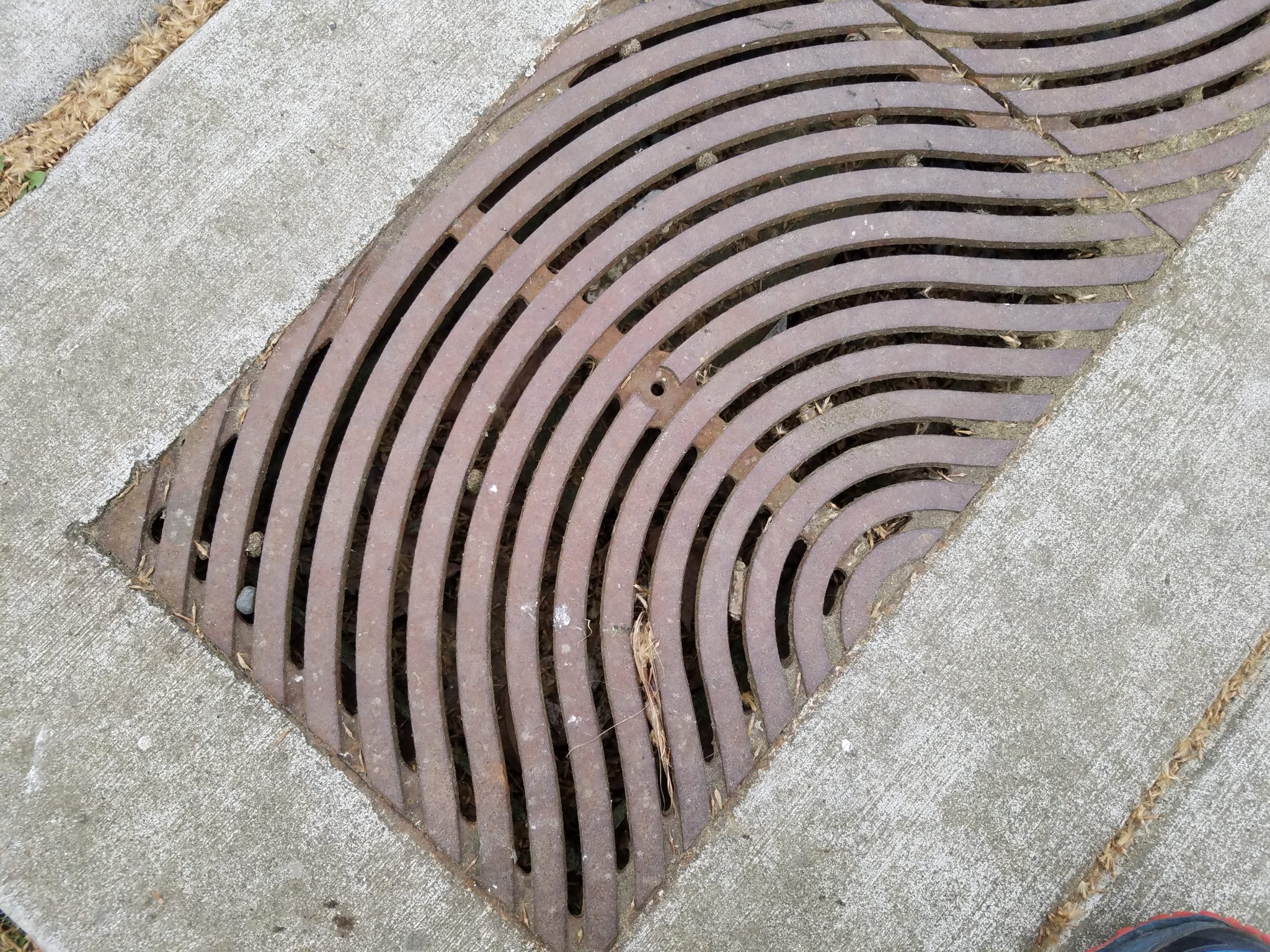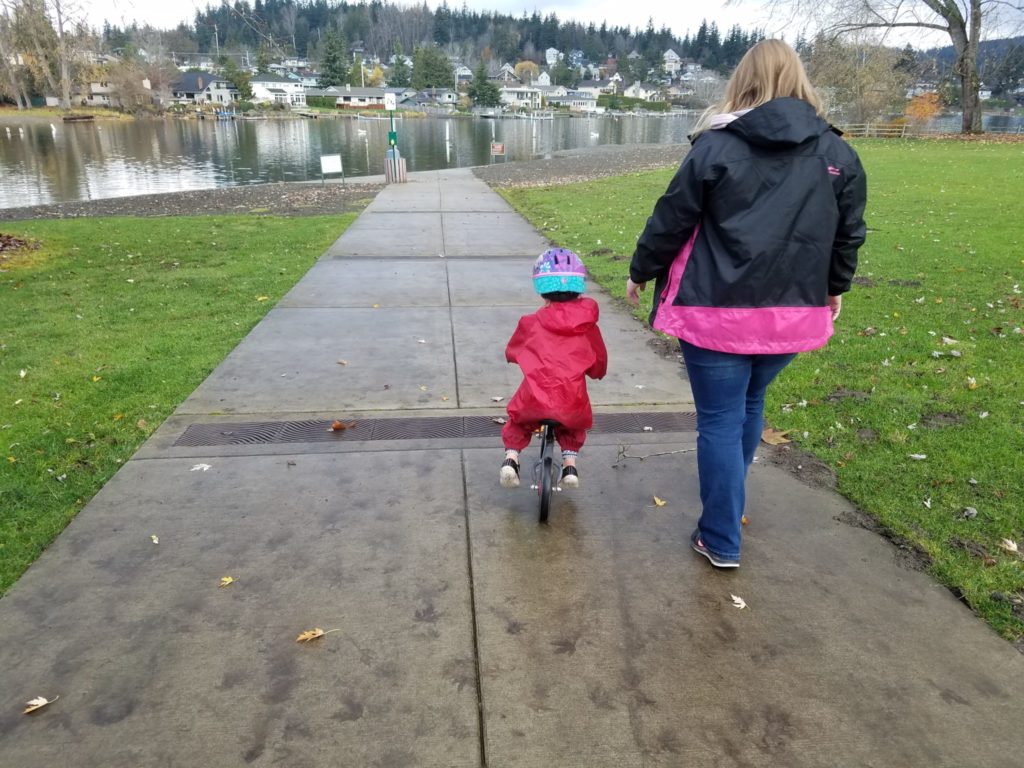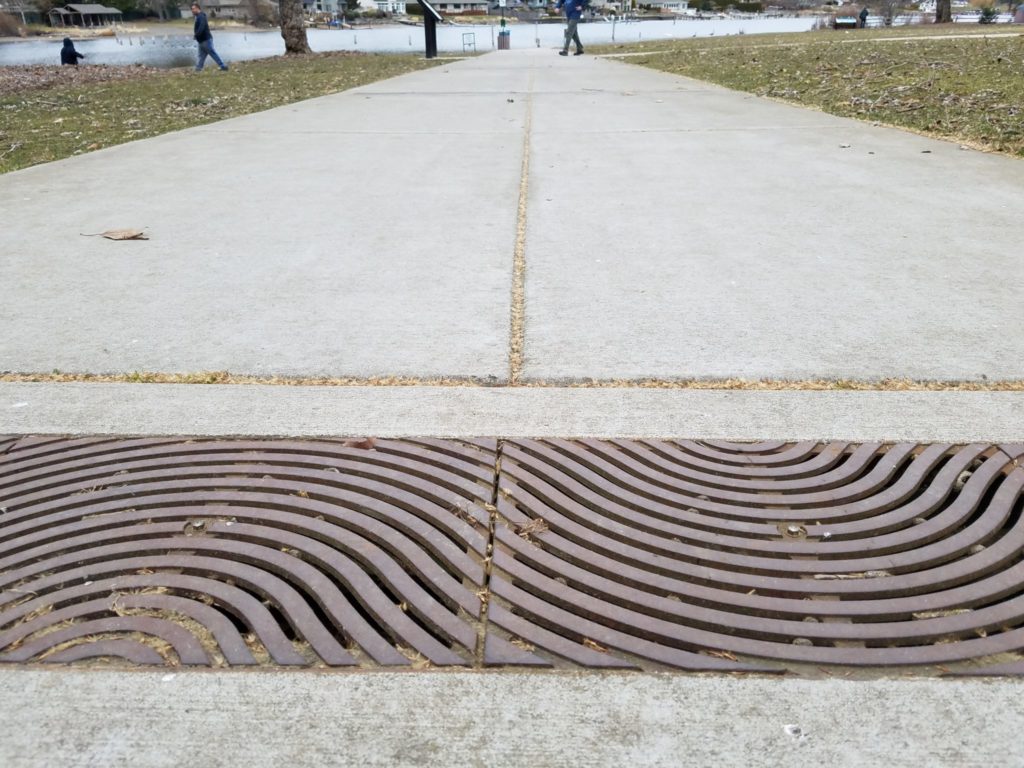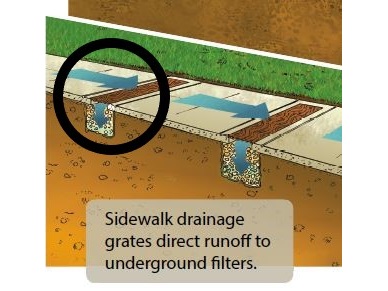Where is this located? It’s located between the lake and the Multi-Purpose Building.
What’s special about this place? The sidewalk surface is concrete and not able to soak up water. So, drains were installed at regular intervals in the sidewalk. The drains direct the water and the filter material under the grates captures pollutants in the runoff before it flows into the ground. The media filter drains are effective at removing phosphorus which can harm the lake’s water quality. Many efforts have been made to keep additional phosphorus from getting into the lake. Too much phosphorus can cause an overgrowth of algae.
image gallery
select any photo to see a slideshow




